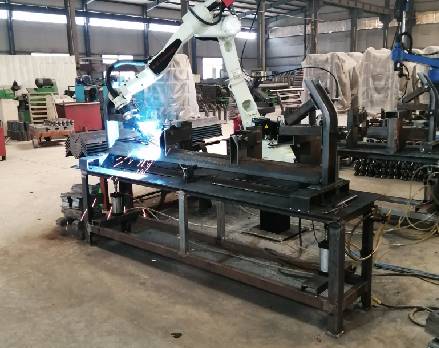 Afrikaans
Afrikaans  Albanian
Albanian  Amharic
Amharic  Arabic
Arabic  Armenian
Armenian  Azerbaijani
Azerbaijani  Basque
Basque  Belarusian
Belarusian  Bengali
Bengali  Bosnian
Bosnian  Bulgarian
Bulgarian  Catalan
Catalan  Cebuano
Cebuano  Corsican
Corsican  Croatian
Croatian  Czech
Czech  Danish
Danish  Dutch
Dutch  English
English  Esperanto
Esperanto  Estonian
Estonian  Finnish
Finnish  French
French  Frisian
Frisian  Galician
Galician  Georgian
Georgian  German
German  Greek
Greek  Gujarati
Gujarati  Haitian Creole
Haitian Creole  hausa
hausa  hawaiian
hawaiian  Hebrew
Hebrew  Hindi
Hindi  Miao
Miao  Hungarian
Hungarian  Icelandic
Icelandic  igbo
igbo  Indonesian
Indonesian  irish
irish  Italian
Italian  Japanese
Japanese  Javanese
Javanese  Kannada
Kannada  kazakh
kazakh  Khmer
Khmer  Rwandese
Rwandese  Korean
Korean  Kurdish
Kurdish  Kyrgyz
Kyrgyz  Lao
Lao  Latin
Latin  Latvian
Latvian  Lithuanian
Lithuanian  Luxembourgish
Luxembourgish  Macedonian
Macedonian  Malgashi
Malgashi  Malay
Malay  Malayalam
Malayalam  Maltese
Maltese  Maori
Maori  Marathi
Marathi  Mongolian
Mongolian  Myanmar
Myanmar  Nepali
Nepali  Norwegian
Norwegian  Norwegian
Norwegian  Occitan
Occitan  Pashto
Pashto  Persian
Persian  Polish
Polish  Portuguese
Portuguese  Punjabi
Punjabi  Romanian
Romanian  Russian
Russian  Samoan
Samoan  Scottish Gaelic
Scottish Gaelic  Serbian
Serbian  Sesotho
Sesotho  Shona
Shona  Sindhi
Sindhi  Sinhala
Sinhala  Slovak
Slovak  Slovenian
Slovenian  Somali
Somali  Spanish
Spanish  Sundanese
Sundanese  Swahili
Swahili  Swedish
Swedish  Tagalog
Tagalog  Tajik
Tajik  Tamil
Tamil  Tatar
Tatar  Telugu
Telugu  Thai
Thai  Turkish
Turkish  Turkmen
Turkmen  Ukrainian
Ukrainian  Urdu
Urdu  Uighur
Uighur  Uzbek
Uzbek  Vietnamese
Vietnamese  Welsh
Welsh  Bantu
Bantu  Yiddish
Yiddish  Yoruba
Yoruba  Zulu
Zulu Understanding lagged drum pulleys and their impact on machinery performance and efficiency
Understanding Lagged Drum Pulleys Importance and Applications
In the realm of mechanical engineering and industrial processes, the concept of lagged drum pulleys plays a critical role in the functioning and efficiency of various systems. A lagged drum pulley is a type of pulley that features a lagging material around its circumference. This material serves to enhance the friction between the pulley and the driving medium, such as a belt or rope, thereby improving the overall efficiency of the power transmission system. This article delves into the significance of lagged drum pulleys, their applications, and considerations for their design and maintenance.
The Role of Lagging Materials
Lagging materials are typically made from rubber, polyurethane, or other friction-enhancing substances. The main function of these materials is to increase grip and reduce slippage during the operation of the machine. This is particularly important in heavy-duty applications where substantial forces are applied. The enhanced friction ensures that the power transfer from the driving medium to the pulley is maximized, reducing energy losses and improving performance.
One of the critical advantages of using lagged drum pulleys is their adaptability to variable load conditions
. When loads fluctuate, the increased coefficient of friction helps maintain operational stability, which is essential in systems like conveyor belts, elevators, and various manufacturing processes. This adaptability is paramount in industries such as mining, construction, and transportation, where unexpected changes in load can occur frequently.Applications in Various Industries
Lagged drum pulleys find applications across multiple industries due to their efficiency and reliability. In mining, for example, these pulleys are vital components of conveyor systems that transport heavy materials over long distances. The lagging allows for effective transmission of power, ensuring that large loads can be moved without slippage, thus preventing material spillage and reducing wear on the equipment.
In manufacturing, lagged drum pulleys are utilized in assembly lines and material handling systems. They enable precise control over the movement of goods and materials, which is essential for maintaining productivity and efficiency. The automotive and aerospace industries also benefit from these pulleys, where precision in power transmission and reliability in operation can significantly influence the overall performance of manufacturing processes.
lagged drum pulley

Another significant application is in the field of elevators and escalators. Lagged drum pulleys ensure that the ropes have a secure grip, allowing for smooth and safe vertical movement. This reliability is crucial for passenger safety and comfort.
Design Considerations
When designing lagged drum pulleys, several factors need to be taken into consideration to maximize their effectiveness. First, the selection of the lagging material is crucial. The material must have the right balance of durability, flexibility, and friction characteristics to suit the specific application. Additionally, the thickness and texture of the lagging can greatly influence performance; for instance, a rougher surface may provide more grip but can also lead to increased wear and tear.
Another important aspect is the diameter of the pulley. Larger pulleys generally lead to lower wear rates and greater efficiency in power transmission, but they also require more space. Engineers must carefully balance these factors to achieve an optimal design that meets the operational requirements without compromising on space or efficiency.
Maintenance and Reliability
To ensure the longevity and reliability of lagged drum pulleys, regular maintenance is key. This includes inspecting the lagging for signs of wear, checking for proper alignment, and ensuring that the bearings and other moving parts are well lubricated. By adhering to a consistent maintenance schedule, operators can prevent premature failures and costly downtime, thus enhancing the overall productivity of the system.
Conclusion
Lagged drum pulleys play a vital role in various industrial applications, ensuring efficient power transmission while mitigating the risks of slippage and wear. Their design, material selection, and maintenance are crucial factors that influence their performance and reliability. As industries continue to automate and innovate, the importance of such components will only grow, underscoring the need for a deep understanding of their workings and applications. Understanding and implementing effective lagging solutions can lead to significant advancements in operational efficiency across multiple sectors.
-
Revolutionizing Conveyor Reliability with Advanced Rubber Lagging PulleysNewsJul.22,2025
-
Powering Precision and Durability with Expert Manufacturers of Conveyor ComponentsNewsJul.22,2025
-
Optimizing Conveyor Systems with Advanced Conveyor AccessoriesNewsJul.22,2025
-
Maximize Conveyor Efficiency with Quality Conveyor Idler PulleysNewsJul.22,2025
-
Future-Proof Your Conveyor System with High-Performance Polyurethane RollerNewsJul.22,2025
-
Driving Efficiency Forward with Quality Idlers and RollersNewsJul.22,2025





























